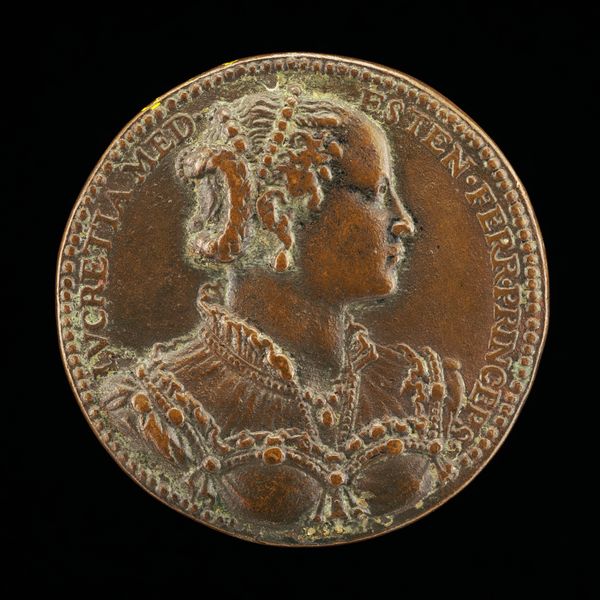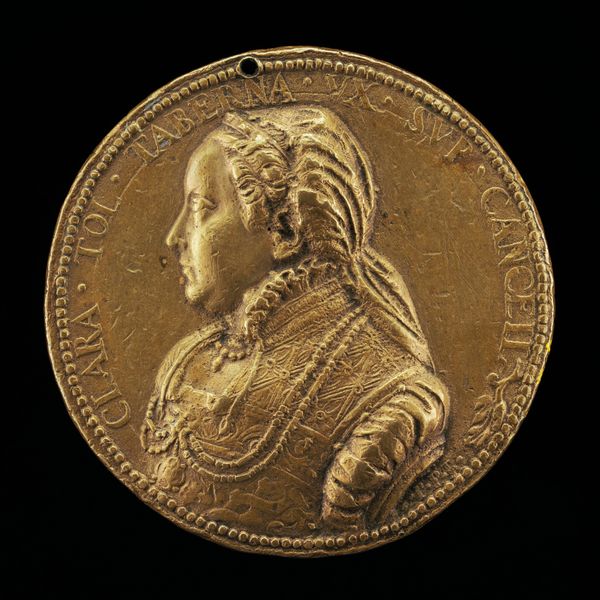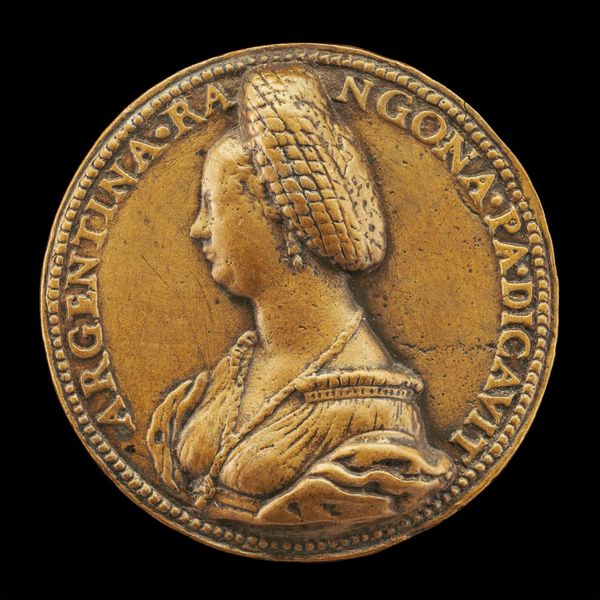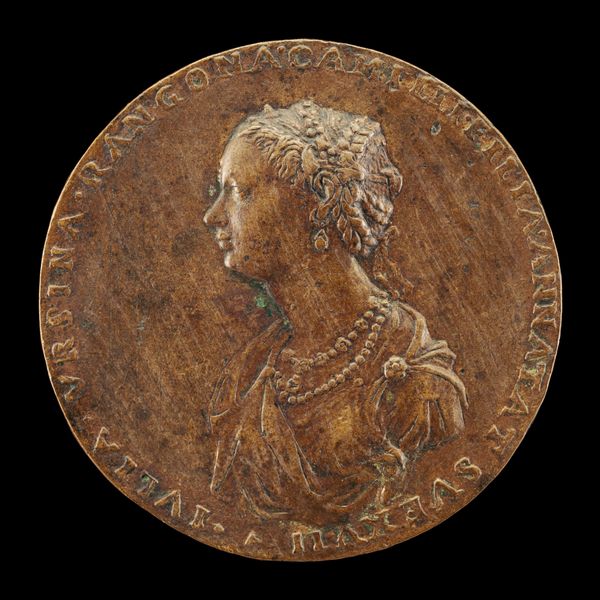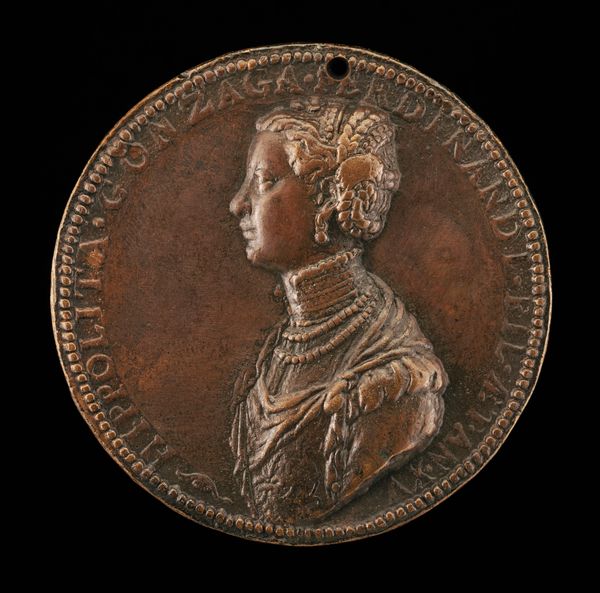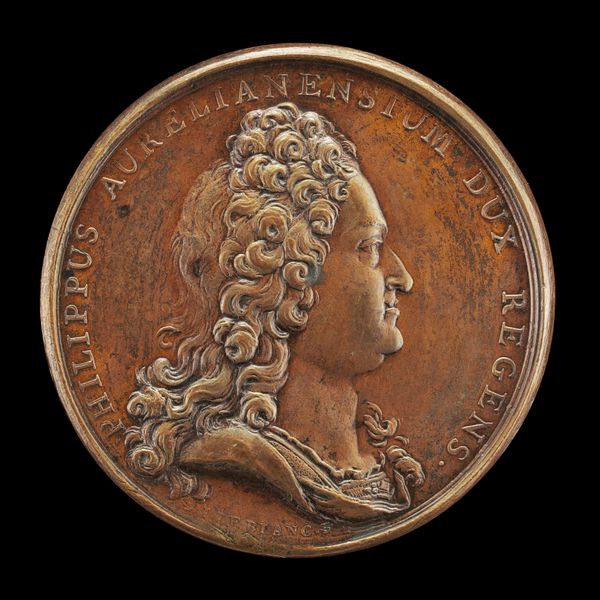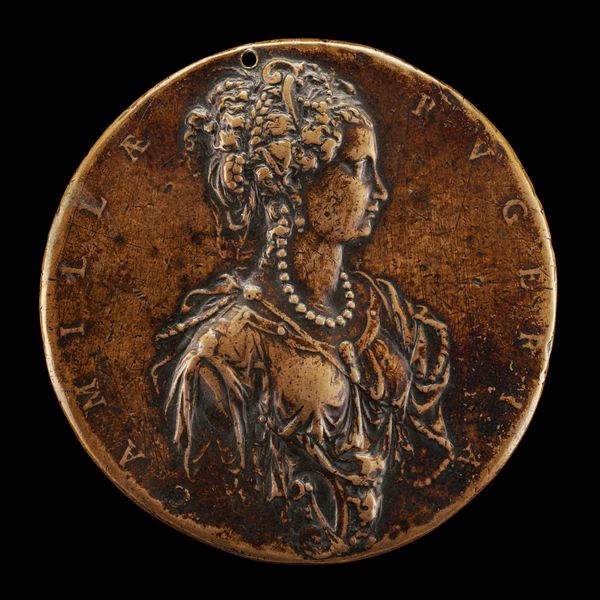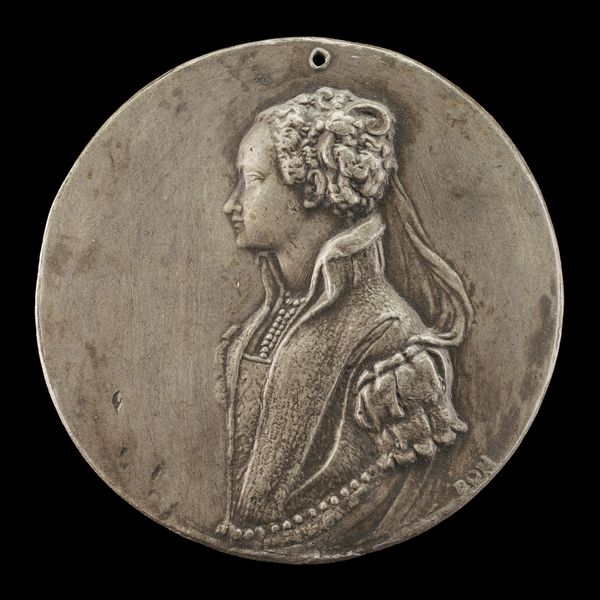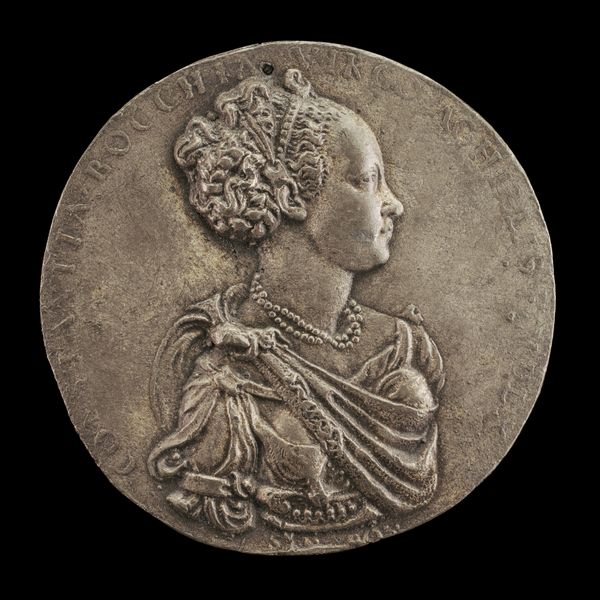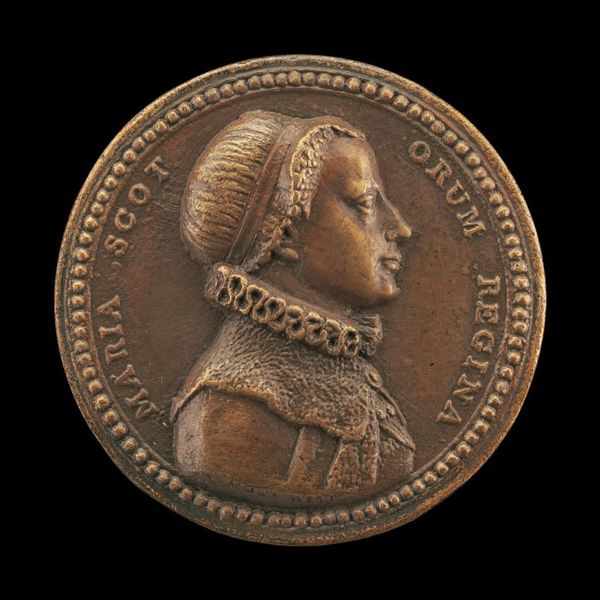![Cassandra Marinoni, Marchioness of Soragna [obverse] by Pier Paolo Galeotti](/_next/image?url=https%3A%2F%2Fd2w8kbdekdi1gv.cloudfront.net%2FeyJidWNrZXQiOiAiYXJ0ZXJhLWltYWdlcy1idWNrZXQiLCAia2V5IjogImFydHdvcmtzLzlkMDNmZmIwLWE2NWQtNDEzYi1iYzI1LWQ2MjA0MmI3YmU4Yy85ZDAzZmZiMC1hNjVkLTQxM2ItYmMyNS1kNjIwNDJiN2JlOGNfZnVsbC5qcGciLCAiZWRpdHMiOiB7InJlc2l6ZSI6IHsid2lkdGgiOiAxOTIwLCAiaGVpZ2h0IjogMTkyMCwgImZpdCI6ICJpbnNpZGUifX19&w=3840&q=75)
Cassandra Marinoni, Marchioness of Soragna [obverse] after 1552
0:00
0:00
metal, bronze, sculpture
#
portrait
#
medal
#
metal
#
sculpture
#
bronze
#
sculptural image
#
11_renaissance
#
sculpture
Dimensions: overall (diameter): 5.75 cm (2 1/4 in.) gross weight: 89.95 gr (0.198 lb.) axis: 12:00
Copyright: National Gallery of Art: CC0 1.0
Curator: Looking at this bronze medal of Cassandra Marinoni, Marchioness of Soragna— likely crafted sometime after 1552 by Pier Paolo Galeotti—I am immediately struck by its exquisite detail, like a whispered secret from the Renaissance. What do you make of it? Editor: It's remarkable, the detail Galeotti achieved in this small space. But my immediate thought goes to power and representation. Cassandra Marinoni isn’t just being portrayed; she's being memorialized, legitimized through this bronze casting. What does it mean for a woman to be preserved in this way during that period? Curator: Ah, but bronze itself has that almost magical quality, doesn’t it? I imagine Galeotti holding this disc, imbuing it with… something beyond likeness. It feels alchemical. Each hammered detail on her dress looks as intricate as frost. Editor: It is alchemy of sorts, imbuing social meaning into art, isn't it? Bronze connected rulers with concepts of stability and permanence since antiquity. And now this medium depicts a woman of power. It really makes you consider her agency, how actively she participated in creating her own image. It wasn’t just about surface likeness, was it? Curator: Her face, the set of her jaw…it speaks of someone with agency, indeed. She clearly understood how to carry herself within a courtly sphere, even beyond, making a place for herself in society that maybe wasn’t traditionally ‘allowed’. Almost… audacious? Editor: Precisely. Think of the limited roles often assigned to women in art and life—muse, mother, object of beauty. Marinoni, here, defies those simplistic categories. She's making a claim. It's there in the inscription encircling her. It signifies far more than simply immortalizing her looks. Curator: The Renaissance liked to blur lines didn’t they? Perhaps Galeotti saw in her some echo of a Roman empress—or did she see it in herself, even project this power? A bit cheeky maybe? In any case it must have taken a good dose of imagination for a piece like this. Editor: Perhaps. But Galeotti, through bronze, creates a physical artifact, meant to circulate, to declare Marinoni's presence and stature to everyone who handled it, an idea materialized for generations. Curator: A reminder—set in bronze. A small moment, eternally cast. Editor: Exactly. It urges us to consider who holds power in representation.
Comments
No comments
Be the first to comment and join the conversation on the ultimate creative platform.
